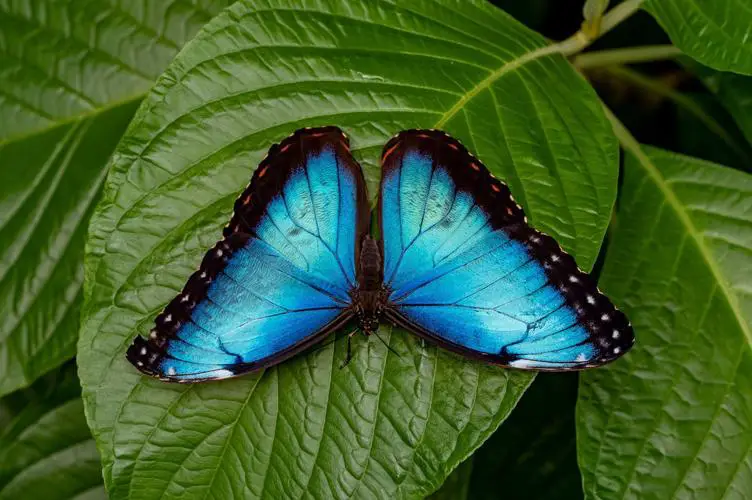The life cycle of a bean plant includes germination, growth, flowering, pollination, and seed production. This article provides a detailed overview of each stage, including the environmental conditions and processes involved.
Understanding the life cycle of a bean plant is essential for successful cultivation and enables gardeners to optimize growth conditions and maximize harvest yields. Bean plants begin their life cycle as seeds, which germinate when provided with moisture and favorable temperatures.
Once germinated, the plant develops roots, stems, and leaves, utilizing sunlight, water, and nutrients to fuel its growth. As the plant matures, it begins to produce flowers, which attract pollinators, such as bees, to transfer pollen between male and female flower parts. Successful pollination results in the formation of seed pods, each containing multiple seeds. These seeds then mature and eventually fall or are harvested, completing the life cycle of the bean plant.

Credit: www.amazon.com
The Magic Begins: From Seed To Germination
Exploring The Anatomy Of A Bean Seed
The life cycle of a bean plant is a fascinating process that starts with a tiny seed. Before we delve into the magic of germination, let’s take a closer look at the anatomy of a bean seed. Understanding the structure of the seed will give us insights into the remarkable journey that lies ahead.
Here are the key points to know about the anatomy of a bean seed:
- Seed coat: The outer layer of the seed, provides protection from external elements and prevents moisture loss.
- Embryo: The tiny plant-to-be residing inside the seed, consisting of the embryonic root (radicle), embryonic shoot (plumule), and cotyledons.
- Cotyledons: The seed leaves that store nutrients to nourish the developing plant until it can produce its own food through photosynthesis.
- Radicle: The first part of the embryo emerges during germination, and develops into the root system of the plant.
- Plumule: The part of the embryo that gives rise to the stem and leaves of the plant.
Understanding The Process Of Germination
Now that we have acquainted ourselves with the structure of a bean seed, let’s explore the enchanting process of germination. Germination is the awakening of the dormant seed, triggered by the right environmental conditions. Here are the key points to understand about the process of germination:
- Water absorption: The seed takes in water, causing it to swell and soften the seed coat.
- Activation of enzymes: As the seed hydrates, enzymes become active and initiate biochemical reactions within the seed.
- Respiration: The embryo’s cells start respiring, breaking down stored nutrients to release energy for growth.
- Root emergence: The radicle elongates and pushes through the seed coat, anchoring the seedlings in the soil.
- Shoot development: The plumule emerges from the seed and extends towards the light, forming the stem and leaves.
- Photosynthesis: Once the plumule emerges, the cotyledons open up and begin producing energy through photosynthesis.
Factors That Influence Successful Germination
Several factors play a crucial role in determining the success of germination. Understanding these factors can help us create optimal conditions to support the growth of bean plants. Here are the key factors that influence successful germination:
- Water availability: Adequate moisture is essential for seed hydration and activation of biochemical processes.
- Temperature: Optimal temperature ranges vary for different bean varieties, but most prefer a range between 65°f and 85°f.
- Oxygen supply: Seeds require oxygen for respiration, so proper soil aeration is necessary for successful germination.
- Light exposure: While bean seeds do not necessarily require light for germination, exposure to light after emergence is crucial for shoot development.
- Seed quality: The quality of the seed, including its viability and genetic potential, greatly affects germination success.
Now that we have explored the magic of seed germination and the factors that influence it, we can marvel at the miraculous transformation of a tiny seed into a thriving bean plant. Embracing the wonders of nature, let’s dive deeper into the next stages of the bean plant’s life cycle.
Stay tuned for more intriguing insights!
Nurturing Growth: From Sprout To Seedling
The Emergence Of The First Shoots
The life cycle of a bean plant begins with the emergence of the first shoots. This is an exciting moment as tiny green sprouts push through the soil, signaling the start of growth. Here are the key points to understand about this phase:
- The first shoots, also known as cotyledons, are formed from the embryo of the seed.
- These cotyledons contain stored nutrients that provide nourishment to the growing plant.
- As the shoots emerge, they start to produce leaves that play a vital role in capturing sunlight for photosynthesis.
- The shoots will continue to elongate, eventually forming the stem of the bean plant.
The Development Of The Root System
Simultaneously, while the shoots are emerging, the bean plant’s root system undergoes development. The root system plays a crucial role in providing stability and extracting necessary nutrients from the soil. Here are the key points about the root development:
- Initially, the primary root, also called the radicle, starts to push downward into the soil.
- Lateral roots begin to grow from the primary root, extending and spreading out into the surrounding soil.
- The root system obtains water and minerals from the soil, necessary for the plant’s growth and health.
- Roots also serve as an anchor, ensuring the plant remains stable as it grows taller.
The Importance Of Light And Water In Seedling Growth
Light and water are essential factors that contribute to the growth of bean plant seedlings. They both serve critical functions in nurturing the development of the plant. Here’s what you need to know:
- Light is crucial for photosynthesis, a process in which the plant converts sunlight into energy and produces oxygen.
- Adequate light exposure promotes the growth of healthy leaves, allowing the plant to harness energy efficiently.
- Water is essential for hydration and nutrient absorption through the roots.
- Insufficient water supply can hinder the seedling’s growth and lead to wilting or stunted development.
Remember, during germination and early growth, it’s important to provide the right conditions of light and water to support the bean plant’s seedling growth. By understanding the emergence of shoots, the development of the root system, and the significance of light and water, you can ensure a healthy start to your bean plant’s life cycle.
Unveiling Nature’s Artistry: From Seedling To Mature Plant
The life cycle of a bean plant is a fascinating journey that showcases nature’s artistry. From a tiny seed to a mature plant, each stage offers unique beauty and remarkable growth. Let’s delve into the remarkable journey of a bean plant, exploring the growth of leaves and stems the formation of flowers and pods, and the intricate process of pollination.
The Growth Of Leaves And Stems
- As the bean seed germinates, it sends out a tiny root that anchors itself in the soil. This root system absorbs water and nutrients vital for growth.
- Soon after, the seedling emerges with its first pair of small, green leaves called cotyledons. These cotyledons provide nourishment until the true leaves form.
- Over time, the bean plant develops more leaves and stems, expanding its surface area to capture sunlight through a process called photosynthesis.
- The leaves act as factories, converting sunlight, water, and carbon dioxide into glucose and oxygen, essential for plant growth.
- As the bean plant continues to grow, its stems become sturdier to support the weight of the leaves and other plant structures.
The Formation Of Flowers And Pods
- Once the bean plant reaches a certain stage of growth, it begins to produce flowers. These flowers are not only visually appealing but also play a vital role in reproduction.
- The flowers typically have both male and female reproductive organs. The male organs produce pollen, while the female organs contain the ovules.
- Through various mechanisms, such as wind or insect pollination, the pollen from the male organs reaches the female organs, fertilizing the ovules.
- After successful fertilization, the flowers start to wither, and the ovules develop into young pods.
- These pods gradually grow in size and transform into bean pods, enclosing the developing bean seeds.
Understanding The Pollination Process
- Pollination is a crucial step in the life cycle of a bean plant. It is the transfer of pollen from the male reproductive organs to the female reproductive organs.
- The bean plant can achieve pollination through self-pollination or cross-pollination.
- In self-pollination, the pollen from the male organs is transferred to the female organs within the same flower or another flower on the same plant.
- Cross-pollination, on the other hand, occurs when pollen from one plant is transferred to the female organs of another plant either by wind or insect pollinators.
- Successful pollination leads to fertilization, resulting in the development of healthy bean pods and seeds.
As we unveil the captivating journey of a bean plant, it becomes evident how nature’s artistry intricately weaves together every stage of growth, from the emergence of leaves and stems to the formation of stunning flowers and pods. Understanding the pollination process is key to nurturing and fostering the development of these remarkable plants.
So, next time you observe a bean plant, take a moment to appreciate the natural beauty and incredible transformations it undergoes.
Maturing For Future Generations: From Pollination To Seed Production
The life cycle of a bean plant is a fascinating journey that involves multiple stages and processes. One of the most crucial aspects in this cycle is the maturation of the plant for future generations; from pollination to seed production.
It is during this phase that the bean plant ensures its survival by developing and dispersing seeds. Let’s take a closer look at the role of pollinators in plant reproduction, the fertilization process, and the formation and maturation of bean seeds.
The Role Of Pollinators In Plant Reproduction
Pollinators play a crucial role in the reproduction of bean plants. These small creatures, such as bees and butterflies, aid in the transfer of pollen from the male part of the flower to the female part. Here are the key points to understand about the role of pollinators:
- Pollinators collect nectar from flowers, unintentionally picking up pollen grains in the process.
- As they move from one flower to another, they deposit the pollen onto the stigma, the female reproductive organ of the plant.
- This transfer of pollen stimulates the fertilization process, enabling the plant to produce seeds.
- Without pollinators, the bean plants would struggle to reproduce, leading to a decline in their population and potential impacts on the ecosystem.
The Fertilization Process
Once the pollen is transferred to the stigma, the fertilization process begins. This intricate process involves several steps that ensure the successful fusion of male and female gametes. Here’s what happens during fertilization:
- The pollen grain germinates on the stigma, forming a pollen tube.
- This tube grows and extends down to reach the ovary, which contains the female reproductive cells.
- The male gametes travel through the pollen tube to the ovary, where they fertilize the ovules.
- The fusion of the male and female gametes results in fertilized seeds, setting the stage for seed production.
The Formation And Maturation Of Bean Seeds
After successful fertilization, the bean plant focuses on developing and maturing its seeds. This phase is crucial as it ensures the future growth and survival of the plant. Here are the main points to understand about seed formation and maturation:
- The fertilized ovules develop into embryos, surrounded by protective seed coats.
- The ovary gradually transforms into a pod, enclosing the developing seeds.
- Throughout the maturation process, the seeds accumulate essential nutrients, such as carbohydrates, proteins, and fats.
- Once the seeds have reached maturity, the pod starts to dry out and eventually splits open.
- The mature seeds are now ready for dispersal, either through natural means like wind, water, or animals or through human intervention.
The maturing phase of a bean plant is a crucial period in its life cycle. From pollination to seed production, every step ensures the survival and propagation of future generations. Understanding the role of pollinators, the fertilization process, and seed formation provides invaluable insights into the fascinating journey of a bean plant.
A New Beginning: From Seed To Another Life Cycle
Have you ever wondered how a tiny seed turns into a majestic bean plant? The life cycle of a bean plant is truly fascinating, with each phase playing a crucial role in its growth and survival. In this section, we will delve into the first stage of this incredible journey: from seed to another life cycle.
The Dispersal Of Seeds
Seeds are not designed to remain stationary. They have evolved various mechanisms to disperse and find new places to grow. Here are some key points about the dispersal of seeds:
- Seeds can be carried away by wind, water, or animals, allowing them to travel far distances from their parent plant.
- Some seeds have adaptations such as wings or hairs that help them catch the wind and float to new locations.
- Seeds that can withstand digestion by animals are often swallowed, only to be excreted later in a different place.
Conditions Required For Seed Dormancy
Before a bean seed can germinate and start its growth, it may enter a period of dormancy. During this time, the seed remains inactive until certain conditions are met. Here are the conditions required for seed dormancy:
- Adequate moisture is necessary for seed germination. Dry seeds may remain dormant until they come into contact with water.
- Optimal temperature also plays a crucial role. Some seeds require specific temperature ranges to break their dormancy and sprout.
- Some seeds have hard outer coats that need to be scarred or worn down before they can germinate.
The Role Of Seeds In Ensuring The Survival Of The Species
Seeds are not just the starting point of a new bean plant; they also play a vital role in ensuring the survival of the species. Here’s how seeds contribute to the species’ survival:
- Seeds contain all the genetic information needed to produce a new plant. This genetic diversity is essential for adaptation and evolution.
- Some seeds have built-in survival mechanisms, such as the ability to withstand harsh environmental conditions or prolonged periods of drought.
- Seeds ensure the dispersal and colonization of new habitats, helping the species expand its range and avoid overcrowding in a single location.
By understanding the dispersal of seeds, the conditions required for seed dormancy, and the role of seeds in ensuring the survival of the species, we gain a deeper appreciation for the remarkable journey of a bean seed as it embarks on a new life cycle.
Stay tuned as we explore the next stages of this captivating process.
Frequently Asked Questions About the Life Cycle Of A Bean Plant
How Long Does It Take For A Bean Plant To Grow?
Bean plants typically take about 7 to 10 days to germinate, and they grow to maturity in approximately 60 to 90 days, depending on the variety. However, it’s important to note that factors like temperature, soil conditions, and care can impact the growth rate of a bean plant.
What Are The Ideal Growing Conditions For A Bean Plant?
Bean plants thrive in sunny locations with well-draining soil that is rich in organic matter. They prefer temperatures between 70°f to 80°f and require consistent moisture without being waterlogged. It’s best to plant beans after the threat of frost has passed and provide support for climbing varieties.
How Do I Care For A Bean Plant Throughout Its Life Cycle?
Water bean plants regularly, ensuring the soil remains evenly moist but not saturated. Mulching around the plants can help retain moisture and suppress weeds. Regularly inspect the plants for pests and diseases, and provide support for climbing varieties. Harvest beans as they reach maturity for the best flavor and quality.
Can Plant Life Cycles be Enhanced by Adding Fairy Doors to Gardens?
By adding fairy tree door magic garden to your garden, you can create a whimsical and enchanting space that may enhance the plant life cycles. The presence of these charming fairy doors can add a touch of magic and wonder to the environment, which could potentially have a positive impact on the growth and vitality of your plants.
Conclusion
To sum it up, understanding the life cycle of a bean plant is essential for both gardeners and plant enthusiasts. From seed germination to plant growth and maturity, each stage requires different care and attention. By providing the right conditions such as adequate water, sunlight, and nutrients, we can ensure the successful development of bean plants.
It is fascinating to witness how a tiny seed can transform into a thriving plant, bearing fruits that are not only delicious but also packed with nutrients. By incorporating this knowledge into our gardening practices, we can maximize yield and enhance the health of our plants.
So, whether you’re a seasoned gardener or a beginner, remember to nurture your bean plants through each phase of their life cycle, and you will be rewarded with a bountiful harvest and the satisfaction of witnessing nature’s incredible transformation.
Related Articles:
Insect Invasion: Threat to Utah’s Fir Forests
 Dr Ahsanur Rahman, PHD
Dr Ahsanur Rahman, PHD
UK Forests Collapse Imminent: Act Now Against Climate!
 Dr Ahsanur Rahman, PHD
Dr Ahsanur Rahman, PHD
Lightning Strikes Threat: Boreal Fires Jeopardize Carbon
 Dr Ahsanur Rahman, PHD
Dr Ahsanur Rahman, PHD









